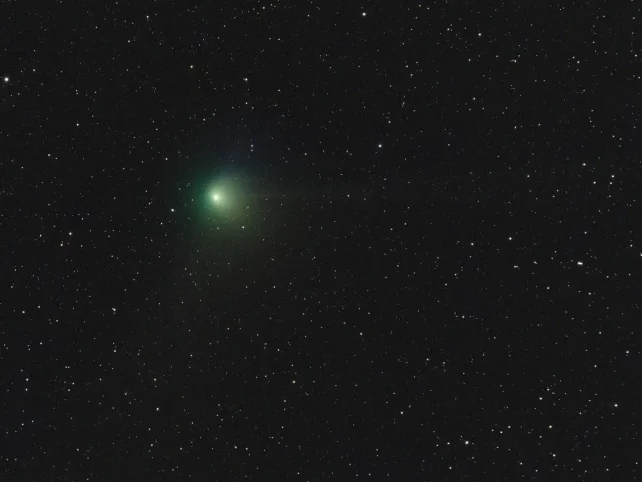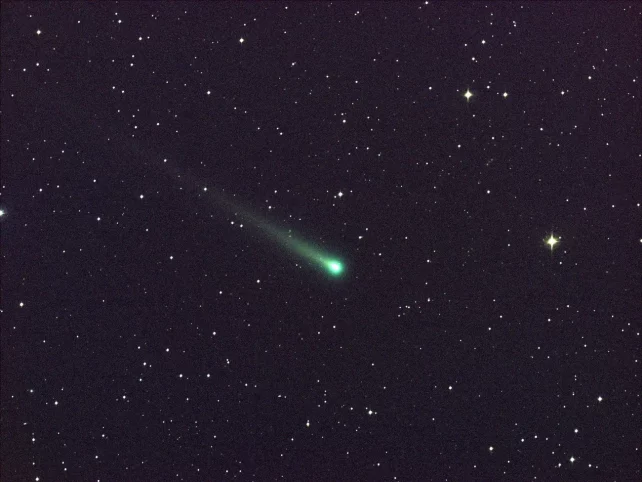
A green comet called C/2022 E3 (ZTF), or Comet ZTF for short, is nearing its closest approach to Earth for the first time since the ice age.
Comet ZTF will come within 26 million miles (42 million kilometers) of our planet on Wednesday, about a third of the distance between Earth and the Sun.
The green comet, which last passed through the inner Solar System about 50,000 years ago, will be at its brightest during this time.

Like other comets, ZTF has a stunning green hue, although skygazers may be unable to see this with the naked eye.
The secret of the comet's green glow lies in a molecule called diatomic carbon, C2, Timothy Schmidt, a professor of chemistry at the University of New South Wales, who studies the phenomenon, said in a tweet Sunday.
While we've known about the C2's green-glowing properties since 1930, it's only in 2021 that we discovered its final secret. Here's how.
A comet is essentially a galactic snowball – it's a body made of ice and dust. As it approaches the Sun, the heat turns the ice into gas creating an atmosphere around the comet called the coma.
As that atmosphere is bombarded with radiation from the Sun, the carbon-based molecules in the cloud are torn apart to create C2, a simple but very unstable molecule, which is easily excited.
What that means is that the molecule can absorb some of the light from the sun, in the form of a photon, to put it in an excited state.
But the Universe likes order, so the molecule will do everything it can to return to its neutral state. To do so, it lets off the photon to release some of the energy from the light, a process called fluorescence.
When it's released from the C2, this photon happens to let off green light.

Physicists have been well aware of the mechanism behind the green glow for almost a century. But it was only in 2021 that a team, led by Schmidt, figured out why the C2 did not keep glowing green when it reached the tail of the comet.
And it was a scientific breakthrough.
The reason why it's so difficult to study this phenomenon on Earth is because C2 is so unstable. The team started off with molecules made up of two carbon atoms and chloride (C2Cl4), which they blasted with a laser to rip the chloride from the molecule.
They then bombarded the remaining C2 with concentrated light.
What they found astonished them. The intense light bounced the C2 into an even more excitable state and broke the molecule apart.
This was the first time anyone had ever observed this chemical reaction, Schmidt said in a press release accompanying the findings published in the Proceedings of the National Academy of Sciences in 2021.
Because of this, they found that the C2 has a very short life span under intense sunlight, which explains why the molecule stops glowing by the time it reaches the tail.
This article was originally published by Business Insider.





No comments:
Post a Comment